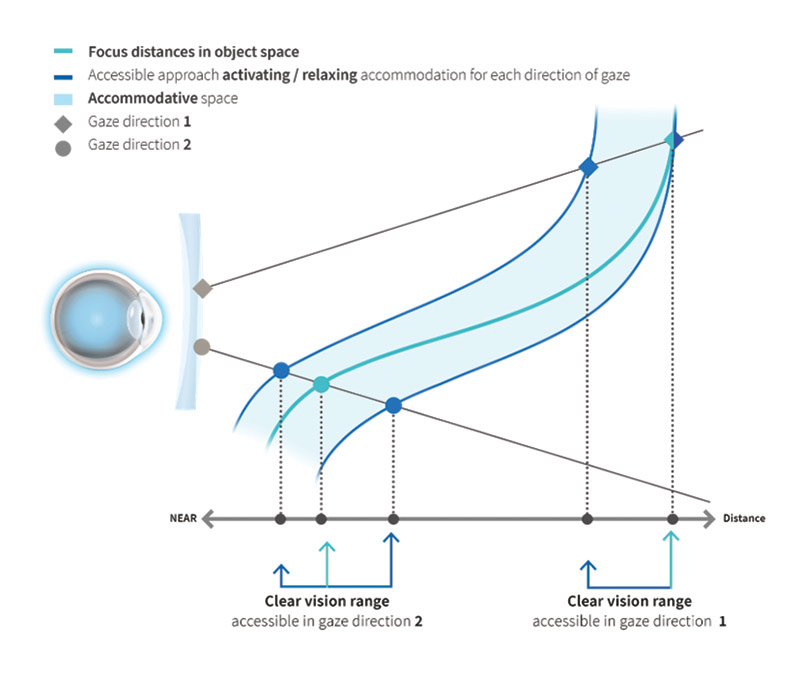Sponsored by IOT
By Tina Lahti, ABOC

Over the years, I have worked with countless opticians. Many want to uncover a tip, trick or secret that will make them better at choosing and fitting PAL designs. While most patients adapt easily to their PALs, those with complex prescriptions and specialized use cases can leave us feeling we are missing something. We have all been there, wondering if there are PAL designs better for a specific patient. While our search helps us learn and grow in our profession, I am sorry to disappoint if you are still looking for a secret solution to PAL dispensing based on some insider knowledge. There is no secret, and no superpower is required. Excellent free-form designs that are accurately fit and manufactured by your laboratory with precision determine success, especially for complex cases.
I have heard opticians argue that a particular PAL design is better for hyperopes. This claim is often used in connection with the Camber lens. But it’s a myth, the Cambers’ design advantages are not limited to hyperopes, nor is any advanced free-form design so limited.
We are in the age of advanced digital free-form design and production. Breakthrough technologies such as Steady Methodology, IOT Digital Ray Path® (DRP) and Digital Ray Path® 2 (DRP2) massively expanded the lens design software’s ability to compute the optimal lens surface to achieve the best lens optics for a given Rx, starting base curve, index of refraction, frame dimensions, frame size and fit parameters, etc. Advanced free-form lens designs are tested across a range of prescriptions to ensure that the design performs as intended. They are designed and tested for a specific outcome. Steady Methodology design technology, for example, is designed to improve distance peripheral optics in a lens and provide better image stability (reduce swim) in a PAL by reducing the mean power (spherical equivalent power) error. Unwanted mean power plays a significant role in image stability and can drastically increase blur and reduce visual acuity.
The real tips in order of importance (my opinion):
- Take accurate fitting heights and PDs (remember to always measure from the pupil height to the deepest part of the frame for the fitting height).
- When confronted with the exceptions, choose a design configuration based on the patient’s experience and lens use. In addition to task specific designs for visually demanding tasks like sports or driving, there are general use progressive designs that are optimized for distance, near and even intermediate vision. Patients will LOVE the optician who identifies and meets their special visual needs for work, when active, crafting or driving. The complicated cases will SEE the improvements of advanced free-form lens optimization and compensation the most. In our digital device-dependent world, I cannot overstress how critical a pair of computer glasses are for most patients. Be knowledgeable and share with every patient that there are lenses that will help them reduce eyestrain and visual discomfort during their workday. Computer and office lenses—recommend and fit them!
- Understand a ray trace technology (like IOT Digital Ray-Path 2): These technologies create a simulation of the complete system that includes the eye and considers all available information on the wearer, frame and lens blank. IOT Digital Ray-Path 2 also considers small power adjustments wearers can naturally make at each fixation point. Oblique aberrations are minimized more effectively with DRP 2.
- Learn to take precise POWs, wrap and pantoscopic tilt angle, and back vertex distance (BVD) especially for your patients with large frames, or non-standard frame fits.
- Understand how and when to choose a minimum fitting height (MFH), the shortest fitting height one can use for a given design and progression length. This is the measurement between the fitting cross and the bottom of the designated near area. Most advanced free-form PALs offer variable and fixed minimum fitting heights. Variable fitting heights are usually best, but there are a few notable exceptions.
Patients who choose large or wrapped frames, or have higher power, or more complex prescriptions realize significant benefits with better technologies such as IOT Digital Ray-Path® 2 and Steady Methodology. These technologies refine the design to improve ease of adaptation by providing more expansive fields of view and more stable vision by reducing aberrations. So, it is no big secret; a well fit, chosen and manufactured advanced free-form lens design will deliver the best possible vision to your patient.












